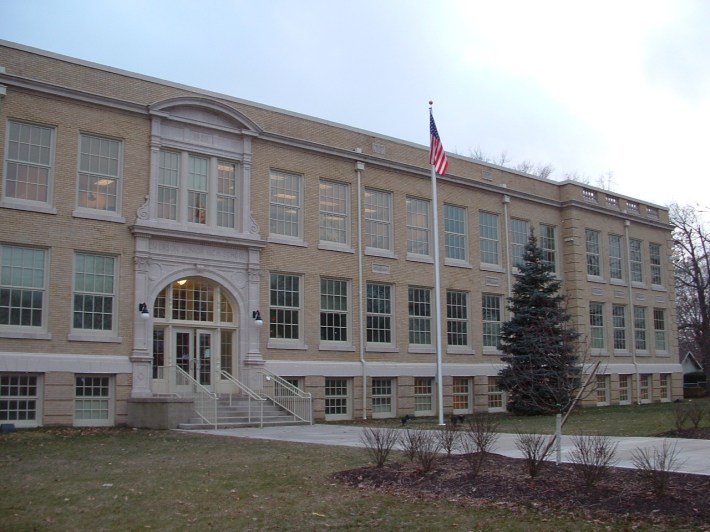
Lakewood, Ohio, population 51,000, doesn't have any school buses. It never has.
Because of the way its schools were designed and sited, this inner-ring Cleveland suburb doesn't need buses -- every child in the district lives less than two miles from their classroom, and most are within one mile.
Lakewood calls itself a "walking school district." It's one of just a small handful in the state of Ohio. "Our community likes the walking," said Lakewood City School District spokesperson Christine Gordillo. "That’s kind of one of our brands."
The school system runs a small transportation program for students with special needs -- about 100 students use it, out of 5,800. The rest of the students are on their own, whether they walk, bike, or get a ride (Lakewood doesn't track how students travel). To transport students to sporting events, the district contracts with another school system.
Gordilla estimates the policy saves the district about $1 million a year, and that allows it to devote more resources to the classroom.
"Parents are really appreciative that we do not constantly have to worry about big budgets for school buses," says Kristine Pagsuyoin, mother of a sixth and eighth grader in the district.

The city's history has set the stage for the walkability of its schools. An old streetcar suburb, Lakewood was incorporated in 1911, before cars were in wide use. So the city has always been walkable and compact, and schools were no exception. All of the district's school buildings are multi-story -- which makes them more compact and walkable -- and they're all sited on smaller lots, in the middle of residential neighborhoods.
Over the years, as the school district has modernized and reduced the number of schools, Lakewood has consciously continued to make walking to school a high priority. In the early 2000s, the city underwent a facilities masterplanning process as it began updating and consolidating many of its school buildings. Gordillo said parents made it clear during that process that they value the walkability of the school district and wanted things to remain as they were.
So the district made its school-bus free transportation policy a continuing priority. When Lakewood reduced the number of schools, it made sure they -- especially the elementary schools -- were spaced out to be close to as many students as possible. Rather than trading the older, walkable buildings for a more sprawling style, many of the historic school buildings underwent historic preservation treatments. That means no giant parking lots either. Some parents or visitors might have to park on a nearby street.
Part of the walkable design was by necessity. Lakewood is a "built-out" community, meaning all of its developable land is already occupied. Building a sprawling car-centric campus far away from where families live wasn't an option, the way it is for a lot of suburban districts.
"We only had the sites to work with," Gordillo said. "We didn’t have a big chunk of land where we could build a new school with more parking."
Pagsuyoin says both of her children walk on their own about a mile, except when it's very cold or her daughter needs to transport her cello. The exercise makes her feel more confident her children are getting enough physical activity, especially her son, who loves computer games.
"There’s sort of this spirit in Lakewood, get your kids walking," she says. "Kids will say, 'I don’t feel like walking today.' I know my response and many parents is, 'Just start walking.'"
Both she and Gordillo says there's something intangible gained as well.
"It does create community that is hard to accomplish in districts where people are more spread out," said Pagsuyoin.





